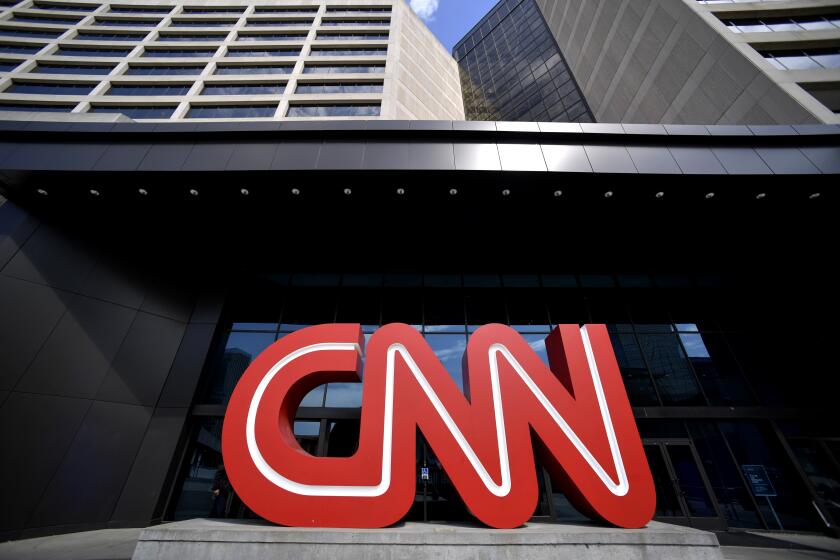Four institutions find right formula for ‘Einstein’ show
- Share via
Apparently, it took a genius to make this collaboration happen.
“Einstein,” an exhibition opening today at the Skirball Cultural Center, sees four of the region’s leading cultural powers -- the Skirball, the J. Paul Getty Trust, the University of Southern California and the California Institute of Technology -- in a rare collaboration on the life and work of Albert Einstein.
For the record:
12:00 a.m. Sept. 16, 2004 For The Record
Los Angeles Times Thursday September 16, 2004 Home Edition Main News Part A Page 2 National Desk 1 inches; 46 words Type of Material: Correction
Einstein photo -- The caption for a photo of Albert Einstein that ran in Tuesday’s Calendar section with an article about an exhibit at the Skirball Cultural Center said it showed him at Caltech in the 1930s. The photo was taken in Santa Barbara in 1933.
Although groups tend to work together from time to time -- the Getty often partners with local organizations -- getting all four heavyweights involved in one project is unusual.
“In the time I’ve been here,” David Baltimore said of his seven years running Caltech, “I’ve never seen anything like it.”
This effort came, oddly, from a chance meeting over a Passover seder in spring 2001, at which the heads of all four institutions were present.
“A seder cannot begin without the posing of questions,” said Uri Herscher, the Skirball’s president and chief executive, who hosted the service. “So I posed the question: Would it be possible for the four of us to collaborate on an Einstein project, each bringing our own strengths?”
At that point, of course, there was no Einstein project. But after the four groups discussed the possibility with the American Natural History Museum in New York and the Hebrew University of Jerusalem, which keeps the scientist’s archives, the ball started to roll.
“Part of what’s interesting about this,” said Barry Munitz, Getty Trust president and chief executive, “is that in a city that’s so dispersed, four close friends who are very different people, with very different institutions, managed to put this show together.”
At a news conference Monday at the Skirball, which included an exhibition tour and speeches by representatives of the institutions, USC President B. Steven Sample talked about getting to know Einstein and about going to Jerusalem to view his papers. Sample, who was present at the seder, said that what he liked about Einstein was that “when you look at these manuscripts they are terribly complex, but Einstein always started with a simple problem, a simple question: ‘How do you chase a light wave, and if you catch it, what would it look like?’ ”
Hanoch Gutfreund, president emeritus of Hebrew University, called Einstein “a man through whom one can tell the story of the 20th century.” He noted that the fascination with him is not confined to his scientific achievements.
In an interview, Baltimore said Caltech’s interest was natural. “Einstein spent a lot of time at Caltech,” he said of the scientist’s three terms at the school in the early 1930s. “So we’ve adopted him as one of our own, though we’re not entirely entitled to that.”
Caltech, which will offer a series of lectures on Einstein’s legacy in 2005, also holds many of his papers, some of which found their way into the exhibition.
The scientist’s time in Pasadena will be captured by USC’s contribution to the show, “Three Winters in the Sun: Einstein in California,” a CD-ROM developed by the USC Annenberg Center for Communication.
Munitz acknowledged that some collaborations feel like too many cooks in the same kitchen. “You have to work to make the momentum move in the same direction,” he said. “The more people you add, the complications increase logarithmically, not just mathematically. But this one was a beauty -- it worked so quickly and so well.”
Two cultures
The Einstein show brings together not only four institutions scattered from the Westside to the San Gabriel Valley, but both sides of a long-standing cultural divide.
In 1959, British scholar C.P. Snow gave a lecture about the failure of communication between the sciences and the humanities; the concepts soon became an influential book titled “The Two Cultures and the Scientific Revolution.” To some, the breakdown between these two worlds presaged a larger fragmentation of knowledge, as learning became increasingly specialized.
Einstein, who was interested in philosophy and turned to violin playing to help him concentrate on physics problems, certainly stands as an exception to Snow’s assertion.
Caltech’s Baltimore said the two cultures are not as estranged as is often thought.
“I think scientists and artists are in many ways similar kinds of creative people,” he said. “They do speak different languages and they do have different interests. Scientists and artists, I think, have more to say to each other now than almost any time in history.
“If you go around to galleries in New York, as I do occasionally, you find more and more scientific topics behind the art. I really believe this is because the artists are more intrigued with science. I think they’re a little afraid of it, but I think they’re recognizing right now that science has an enormous impact on the world, and that they can translate that.
Herscher concurred. Both scientists and artists, he said, “are moved by the wish to explore, the wish to imagine, and to share their explorations and imaginings.”
More to Read
The biggest entertainment stories
Get our big stories about Hollywood, film, television, music, arts, culture and more right in your inbox as soon as they publish.
You may occasionally receive promotional content from the Los Angeles Times.










